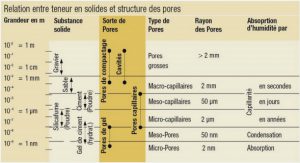Adolescent Idiopathic Scoliosis (AIS) is a 3D deformation of the spine, mainly visible as a lateral curvature in the form of an elongated “S” or “C” shape from the posteroanterior plane. AIS is the most common type of scoliosis, and it is highly prevalent in adolescent between 10 and 18 years of age, or until skeletal maturity. Between 1% to 4% of the adolescent population− mainly girls−is affected by AIS. AIS starts in early puberty, a time when children are growing rapidly, and although not all the curves will be progressive, 1 over 1000 will require a surgical treatment.
The “idiopathic” part of AIS means that the cause is not known. However, genetic studies indicate that there exists an increased risk of developing AIS when there are first degree relatives with this condition. In addition, AIS can be related to other factors such as environmental, central nervous system abnormalities, skeletal and muscle growth, hormonal and metabolic, or other factors not yet identified.
AIS is usually diagnosed by a physical examination or postural screening exam at school. Common signs of AIS are asymmetry in shoulder height or shift of the trunk, where the hips look uneven, which cause that one leg appears to be longer than the other. In addition, a back hump can be visualized when the patient is bending forward.
Clinical assessment and classification of IAS rely on 2D radiographic observations of the spine in the posteroanterior and sagittal planes. These radiographs are taken in a standing position having a full view of the shape of the spine. A sense of abstraction is needed by clinicians who evaluate these projections to figure not only how the spine looks in the 3D space, but also how the curvature will progress.
Advances in technology are changing the current 2D description of AIS towards a 3D characterization. These 3D descriptors could be important to improve the understanding of AIS, as well as to improve assessment, prediction of progression and treatment.
Clinical context
Anatomy of the spine
The spine is usually composed by articulated bones called vertebrae, which help keeping an upright or stand up posture. Being the main support of the human body, it is on charge of the movements of the head and torso, and it serves as a protection for the spinal cord. The spine can flex or rotate, but the grade of movement or function depends on the different sections that compose it: cervical, thoracic, lumbar, sacral and coccyx.
Sections of the spine
The spine is divided in five sections , each of them is in charge of specific functionalities:
• Cervical spine (upper back): Numbered from C1-C7, is the main support of the head. It is the section with greatest range of motion, especially because the first two vertebrae are directly connected to the skull, which allow the motion of the head.
• Thoracic spine (middle back): Numbered from T1-T12. This section is on charge of the protection of the heart and lungs by holding the rib cage.
• Lumbar spine (lower back): Numbered from L1-L5. The weight of the body is supported by this region. The vertebrae that form this part of the spine are much larger in size, compared to the previous sections.
• Sacrum: It contains five fused vertebrae. Its principal purpose is to connect the spine to the hip bones.
• Coccyx: Also known as tailbone, is comprised by four fused vertebrae. It helps to keep attached the ligaments and muscles of the pelvic floor.
Curves of the spine
The spine naturally develops curves. When viewed from the coronal plane, it looks like a straight line. However, from the sagittal plane there are two observable curvatures in the thoracic and lumbar sections, and the aspect of the spine seems such as a soft ‘S’ shape . These normal curves are known as kyphosis and lordosis, which are essential for the human body to keep the balance between the trunk and head over the pelvis. Both are considered normal to a certain extent.
Adolescent Idiopathic Scoliosis: characterization and classification
The gold standard method to quantify the magnitude of the curves with AIS is the Cobb angle. It receives its name from Dr. Jon R. Cobb, who in 1948, first described the curvature of the spine as a measure of the magnitude of deformities. It is measured in degrees and helps physicians to determine the severity of the deformation and to decide what treatment will be necessary for the patient.
In clinical practice, the Cobb angle is measured on the posteroanterior and lateral X rays, the most common imaging modality to observe the spine in a standing position. The radiographs are acquired based on the global coordinate system proposed by the Scoliosis Research Society (Stokes, 1994b). The x-axis is the horizontal axis that runs from the rear to the front of the patient, while the y-axis is the horizontal axis that runs from the right to the left of the patient. The z-axis is the vertical axis, which goes from the bottom of the patient upward .
The Cobb angle is calculated in the postero-anterior plane, and it is formed between a line drawn parallel to the superior endplate of the upper vertebra included in the scoliotic curve and a line drawn parallel to the inferior endplate of the lower vertebra of the same curve . If the Cobb angle is ≥ 10°, the patient is diagnosed with scoliosis.
INTRODUCTION |






